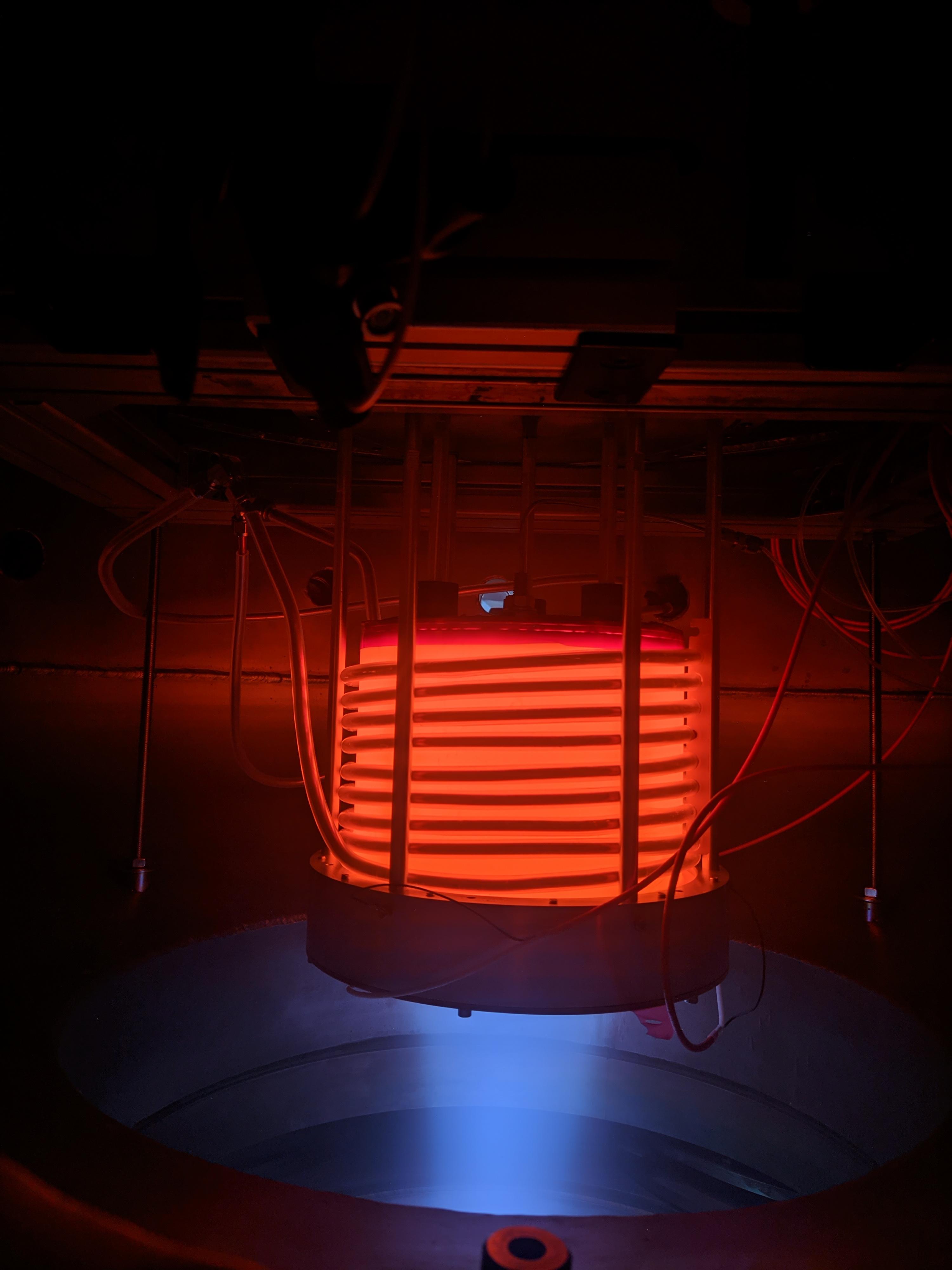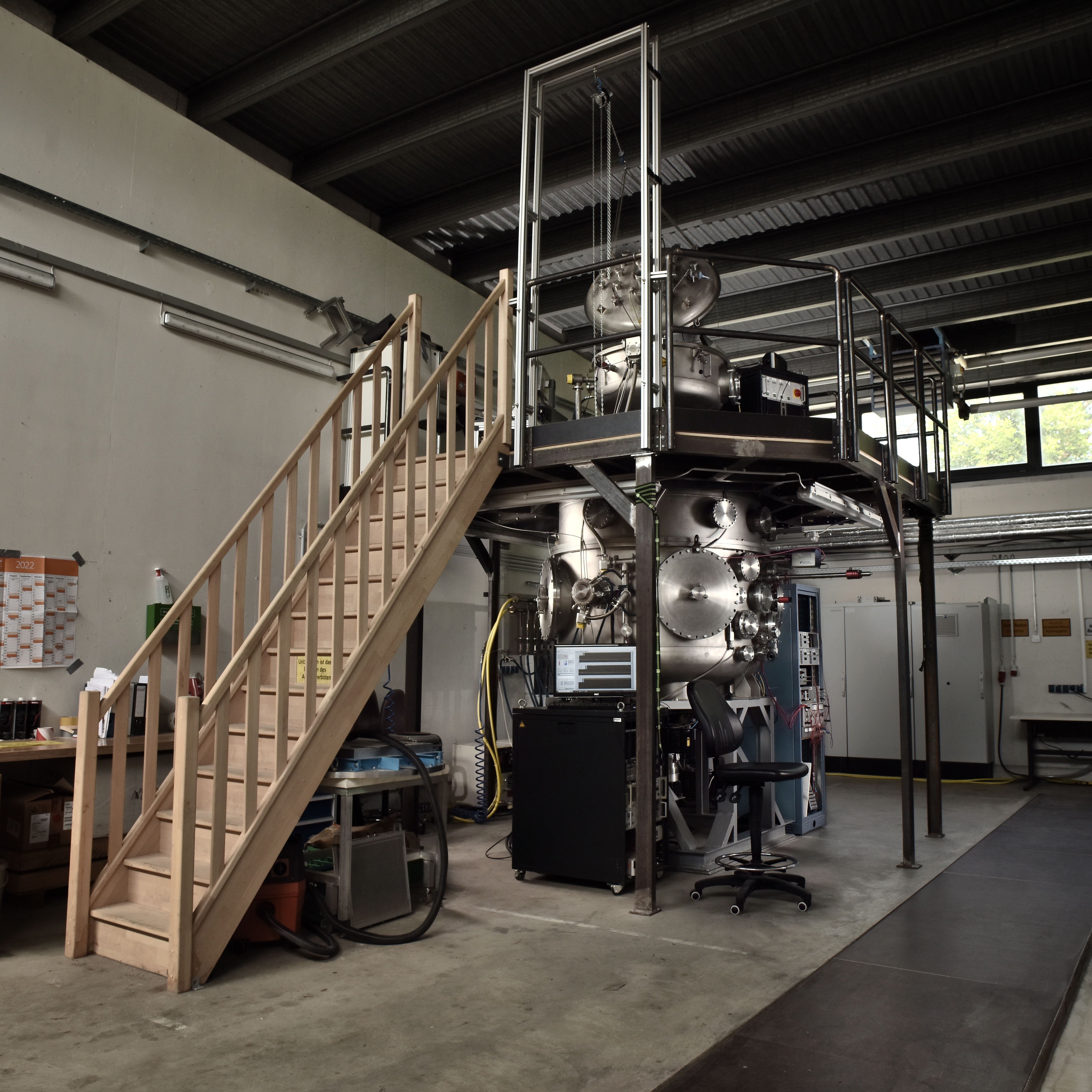We are thrilled to report about our exciting collaboration with TransMIT marking our foray into air-breathing electric propulsion. Using Radio Frequency Plasma Generator together with Charge Separation Accelerator Stage (CSAS) designed for AETHER Air Breathing Electric Propulsion Unit [1] we have simulated operation of an RAM-EP device [2]. Throughout our test campaign we have achieved remarkable goals:
-
Functional test: Demonstrated seamless initiation, sustainable thrust, and standby modes of the Radio Frequency discharge plasma generator with Charge Separation Accelerator Stage (CSAS) supplied with Xe and then Nitrogen/Oxygen mixtures in the various proportions corresponding to expected Earth Atmosphere at 160-210 km.
- Endurance validation: Confirmed the resilience to operate flawlessly with diverse atmospheric propellants, affirming its adaptability and robustness.
- Thruster performance: The CSAS demonstrated performance within the anticipated range of 7 mN to 20 mN as per project requirements, showcasing its potential for future missions.
- Unique diagnostic techniques: For the first time, the team tested the spectroscopic methods in order to define beam composition and determine relationships between thruster input parameters and the resulting thruster properties.
- Athmosphere simulation: A Very Low Energy Particle Flow Generator was tested to resemble VLEO atmosphere that could be used in the end-to-end testing of RAM-EP systems. Unprecedented for these devices, absolute particle energy down to 12 eV was achieved with various plume compositions.
We evaluated the performance of the system under a 1000 W power envelope, achieving the desired thrust range at expected available flow rates. Pushing the boundaries further, under high-power conditions exceeding 1000 W, the system operated successfully. In case if power availability to the system would extend 2 kW for CSAS, we foresee potential drag compensation at all altitudes within Very Low Earth Orbit (VLEO). With advancements in power sources, the allure of this technology will undoubtedly skyrocket.
The test took place at R2D2 vacuum chamber. It consists of a test chamber and a hatch, that are separated by a pneumatic high vacuum isolation gate valve. Featuring a test chamber with dimensions of approximately 1.9 m in diameter and 4 m in length, alongside a hatch volume measuring 0.75 m in diameter, our testing environment provided close to space conditions while thruster operation. Supported by a robust pumping speed of 25,000 l/s and a formidable 1.5 kW power beam dump, our endeavors unfolded amidst an atmosphere of precision and possibility.

Air-breathing electric propulsion (ABEP) is a complex technology that poses several technical challenges that must be addressed before it can be used for space missions [3]. Some of the main challenges in ABEP include:
- Integration of air-breathing and electric propulsion: The seamless integration of air-breathing electric propulsion systems remains a paramount challenge, demanding cutting-edge technologies and ingenious design.
- Power generation: The enormous requirements for electrical power in ABEP systems necessitates the development of lightweight and efficient power generation solutions to propel us into the future.
- Control and stability: Navigating the intricate nuances of transitioning between atmospheric and vacuum environments demands control and stability, essential for mission success and safety.
- Testing and validation: The task to validate and refine ABEP systems requires pioneering testing methodologies and simulation frameworks, charting a course toward unparalleled performance and reliability.
- Atomic oxygen: Standing as a formidable adversary, atomic oxygen threatens the integrity and longevity of propulsion systems in the hostile expanse of space. Taming this reactive force is essential for the viability of ABEP technology.
Despite these challenges, our resolve remains unyielding. Fuelled by passion and innovation, we are poised to chart new frontiers in propulsion technology. Stay tuned for more updates as we soar toward the stars!
Literaturverzeichnis
[1] |
„AETHER Project | Demonstrating Air-Breathing Electric Space Propulsion,“ 2024. [Online]. Available: https://aether-h2020.eu/ |
[2] |
T. Andreussi, E. Ferrato, C. Paissoni, A. Kitaeva, V. Giannetti, A. Piragino, S. Schäff, C. Berenguer, K. Katsonis, Z. Kovacova, E. Neubauer, M. Tisaev, B. Karadag, A. Fabris, M. Smirnova, A. Mingo, D. Quang, Z. Alsalihi, F. Bariselli und T. Magin, „The AETHER project: development of air-breathing electric propulsion for VLEO missions,“ CEAS Space Journal, Bd. 14, pp. 1-24, 2022. |
[3] |
T. Misuri, „AETHER. Development of Air-Breathing Electric Propulsion for VLEO Missions,“ Naples, 2023. |